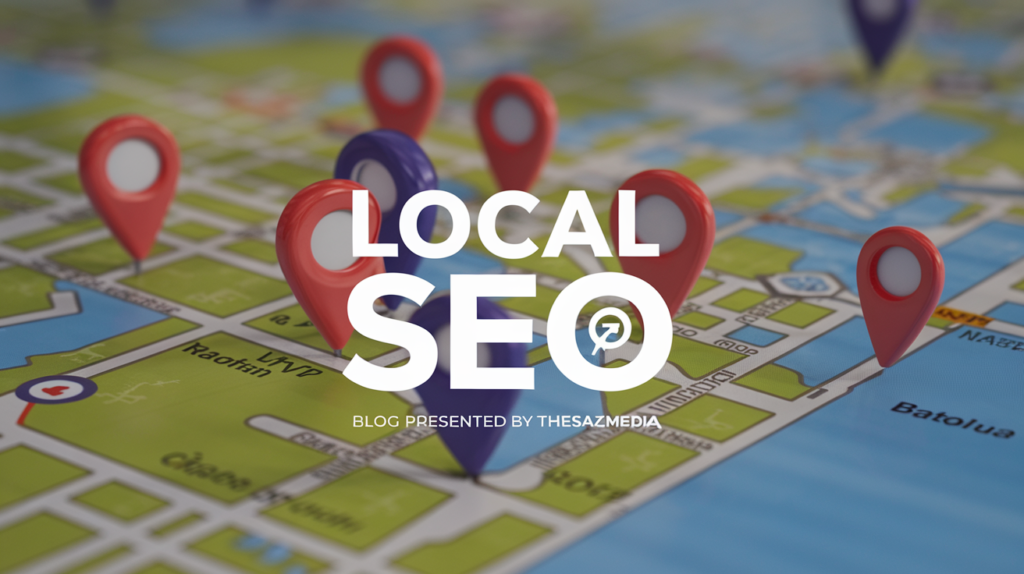
Local SEO is more than just ranking higher on Google—it’s about dominating your neighborhood! Imagine this: 78% of local mobile searches lead to an in-store visit within a day. That’s the power of local search optimization.
But here’s the challenge: it’s not enough to just be listed. If your business isn’t standing out in the local map pack, you’re losing customers to competitors. This guide is here to show you exactly how to change that.
We’ll break down what local SEO is, why it’s critical to your business, and how to implement strategies that get results fast. Whether you’re targeting a single neighborhood or multiple service areas, you’ll walk away with actionable tips to make your business the go-to choice in your local market.
Let us get started and change how your company appears in local search results!
What Is Local SEO?
How Local SEO Works
How to Do Local SEO
How to Monitor Your Local SEO Results
Start Building Your Local Visibility
Optimizing for Google’s Local Map Pack: Unique Strategies
Advanced Local SEO Strategies
Local SEO Audit: How to Perform One
What Is Local SEO?
Local SEO (Local Search Engine Optimization) is a digital marketing strategy that helps businesses become more visible in local search results on search engines like Google. When someone searches for services or products with a location-specific keyword—such as “best dental clinic near me” or “dental clinic in [city name]”—Local SEO ensures your business appears at the top of those results.
Unlike traditional SEO, which focuses on improving search visibility on a national or global scale, Local SEO is focused on optimizing your online presence to reach people in your local area. This means when potential customers are searching for services or products you offer within a specific geographical region, they can find your business easily.
Key Elements of Local SEO
Google Business Profile (GBP): This is a free tool that allows your business to appear in local search results and Google Maps. By setting up and optimizing your GBP, you increase the chances of your business appearing when local customers search.
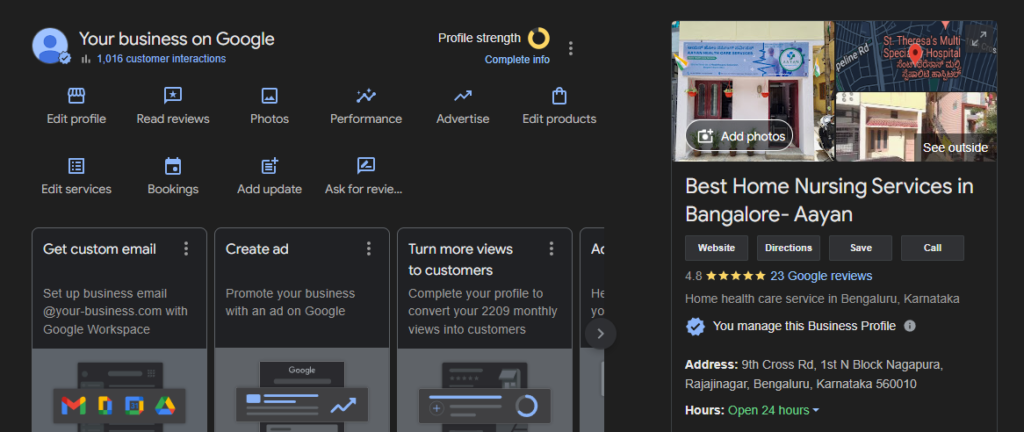
NAP Consistency: One of the critical aspects of Local SEO is ensuring that your business’s Name, Address, and Phone number (NAP) are consistent across your website, social media, and all local directories. This consistency signals to search engines that your business is credible and trustworthy.
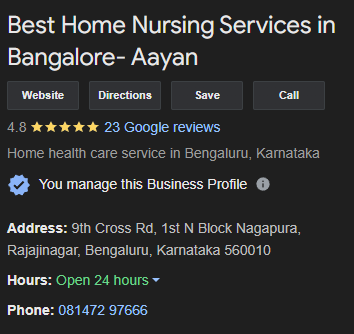
Online Reviews: Positive customer reviews significantly impact your local ranking. Encouraging customers to leave reviews on platforms like Google helps build trust and improves your position in local search results.
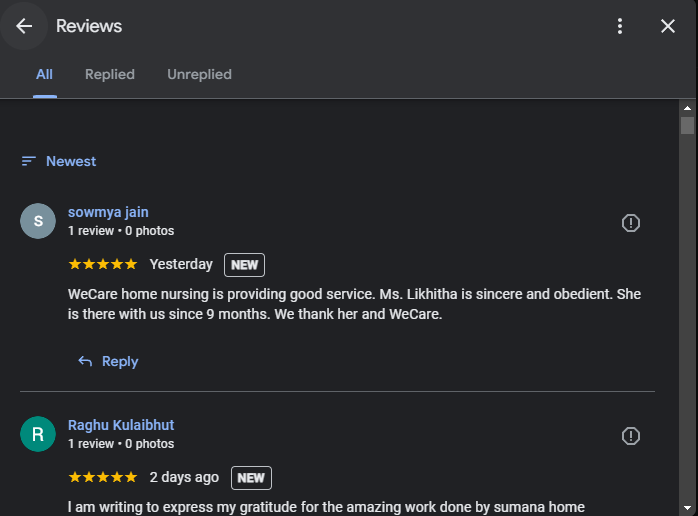
Local Citations: Citations are mentions of your business’s name, address, and phone number on other websites. Local directories, business listings, and social media platforms are common places to build citations. These citations improve your business’s local authority and visibility.
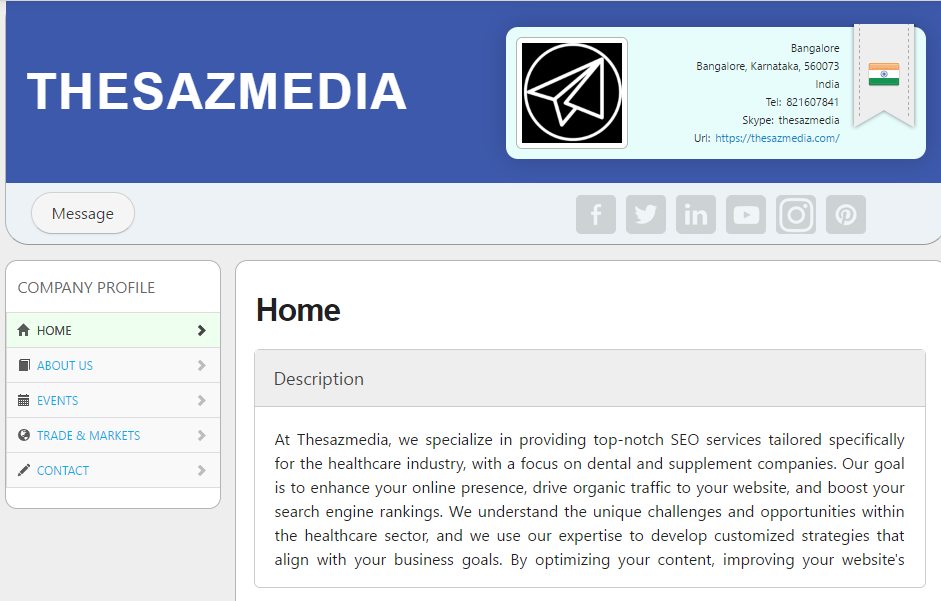
Local Backlinks: Backlinks from local websites (such as news outlets or other businesses in your area) are valuable for boosting your site’s authority and relevance in local searches.
In simple terms, Local SEO helps your business stand out in searches made by people nearby who are looking for your services. This means Local SEO isn’t just about getting traffic; it’s about getting the right traffic—people who are likely to become your customers because they are physically close to your business.
Why It Matters
Did you know?
46% of all Google searches are looking for local information.
78% of local mobile searches result in an offline purchase within 24 hours.
This data shows how important it is for local businesses to invest in Local SEO. People who search for local services are often ready to act immediately, making local SEO one of the most effective strategies for attracting foot traffic and increasing sales.
Actionable Tip: How to Start with Local SEO
The first step in your Local SEO journey is to claim and optimize your Google Business Profile. Ensure all your information is accurate, especially your NAP details, and regularly update your profile with posts, offers, or events. This will increase your chances of appearing in local search results and the Google Map Pack.
Why Is Local SEO Important?
Local SEO is crucial for businesses that rely on customers in a specific geographic area. Whether you’re a small local shop, a service provider like a dentist, or even a regional franchise, optimizing your online presence for local search helps you attract nearby customers who are ready to engage with your business.
In an era where people use smartphones for everything from finding a restaurant to locating the nearest service provider, Local SEO plays a pivotal role in connecting businesses with customers at the right time and place.
Higher Visibility in Local Searches
With 46% of all Google searches being related to local information, there’s a huge opportunity for businesses to appear when someone searches for services nearby. Local SEO ensures your business ranks in these searches, particularly in the Google Map Pack—the top 3 local business results displayed in a prominent section at the top of search pages.
For example, imagine someone searches for “home nursing services in mangalore.” By optimizing your Google Business Profile, including your business hours, reviews, and directions, you increase your chances of appearing in those top results. This visibility gives you a competitive edge over businesses that don’t optimize for local SEO.
Increased Foot Traffic and Sales
Local searches have high intent—when people search for a local service or product, they are often close to making a purchase. In fact, 78% of mobile local searches result in an offline purchase within 24 hours. This means that having your business optimized for local SEO directly leads to more foot traffic and potential sales.
By ensuring that your NAP (Name, Address, Phone Number) is consistent across all platforms, maintaining accurate business hours, and encouraging customers to leave positive reviews, you create a seamless experience for users, increasing the likelihood they will choose your business.
Build Trust and Credibility
Online reviews and local citations are integral to building trust and authority in the eyes of both potential customers and search engines. Positive reviews not only help improve your ranking but also give potential customers confidence that your business is reliable.
For example, if someone is searching for “best home nursing services in Mangalore” they are likely to choose a business that has a high rating and positive reviews. Encouraging customers to leave reviews and responding promptly—whether to praise or complaints—demonstrates your commitment to customer service, enhancing your reputation.
Compete with Larger Businesses
One of the major advantages of local SEO is that it levels the playing field, allowing small and medium-sized businesses to compete with larger, national brands. While major corporations have huge marketing budgets, they often overlook the power of local SEO, leaving room for smaller businesses to dominate in their specific region.
By focusing on local keyword optimization (e.g., “best pizza in [city]”), building local backlinks, and optimizing your Google Business Profile, you can outperform larger companies in local search results. This gives you a significant opportunity to grow your local customer base without having to invest heavily in expensive ad campaigns.
Better User Experience
Local SEO isn’t just about search engines; it’s about improving the overall user experience for your local customers. A well-optimized local presence makes it easier for potential customers to find you, contact you, and visit your location. By ensuring your website is mobile-friendly, your contact information is easy to find, and your hours of operation are accurate, you provide a better experience that keeps customers engaged.
How Local SEO Works
Local SEO works by optimizing your online presence to improve your visibility in local search results, especially for users who are searching for services in a specific geographic area. Search engines like Google use various factors to determine which businesses should rank higher when people search for local services or products. The three most important factors in local SEO are Proximity, Relevance, and Prominence.
Proximity
Proximity refers to how physically close a business is to the person conducting the search. Search engines prioritize businesses that are near the searcher because people often want services or products that are readily accessible. For example, if someone searches for “coffee shop near me,” Google will display results for coffee shops located within a short distance from the searcher’s location.
This factor is especially important for businesses that rely on foot traffic or local services. The closer your business is to the searcher, the higher the chances of appearing in their search results, especially in the Google Map Pack.
Relevance
Relevance measures how well a business matches the searcher’s query. Search engines look at factors like keywords, business categories, and content to determine whether your business is a good fit for what someone is searching for. For instance, if a user searches for “plumber in [city],” Google will prioritize businesses that are explicitly listed as plumbers and mention plumbing services in their profiles or website content.
To improve relevance, businesses need to ensure that their Google Business Profile and website content accurately reflect what they offer. Having the right keywords, including specific services, products, and location names, helps search engines understand what your business is about and when it should appear in local searches.
Prominence
Prominence refers to how well-known and reputable a business is, both online and offline. Search engines consider factors such as online reviews, local citations, backlinks, and overall online activity to assess a business’s prominence. Businesses with a high number of positive reviews, quality backlinks, and regular engagement with their audience are more likely to rank higher in local search results.
Offline factors, like being a well-established or popular business in the local community, also play a role in prominence. For instance, a restaurant with a long-standing reputation and consistent customer reviews will likely rank higher than a new or lesser-known establishment, even if the newer business is closer to the searcher.
How to Do Local SEO
Local SEO is all about optimizing your online presence to be found by local audiences. It requires strategic steps, starting from keyword research to optimizing your Google Business Profile, handling citations, reviews, and more. Here’s how to effectively implement Local SEO for your business.
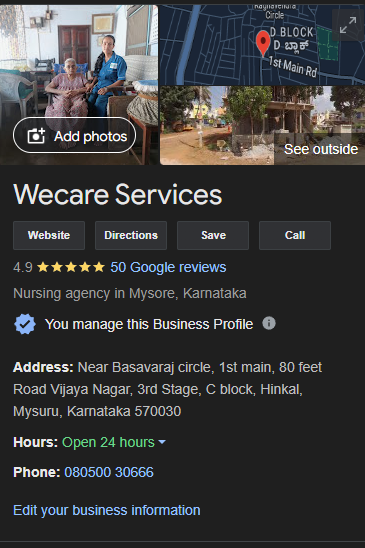
Do Local Keyword Research
To rank well in local search results, you need to focus on the right keywords that your local audience is using. Local keyword research ensures you target terms that match local intent and location-based searches.
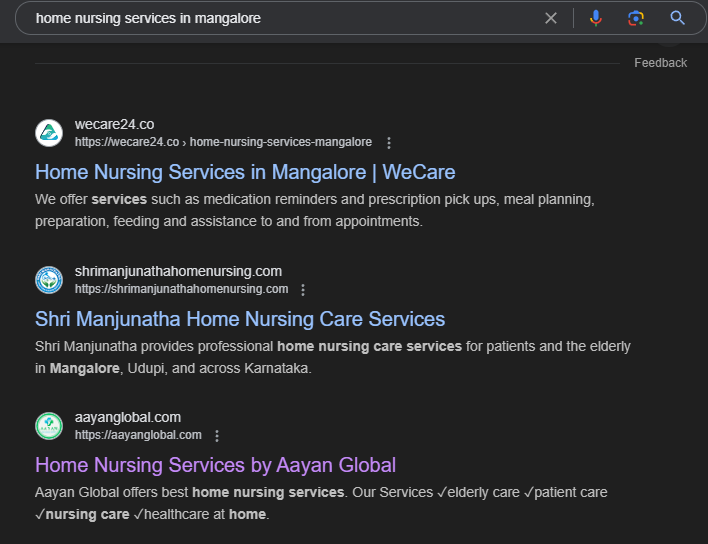
Research Your Competitors
Start by looking at what keywords your local competitors are ranking for. Use tools like Ahrefs or SEMrush to analyze their top-performing keywords. Focus on keywords they use in their Google Business Profile, local directories, and websites. This will give you insights into gaps and opportunities for your business.
Use Google Autocomplete
Google Autocomplete is a quick way to find keyword suggestions based on real user searches. Begin typing a service or product related to your business in the search bar, and let Google fill in suggestions. These suggestions often reflect common search phrases people in your area use.
For example, if you own a dental practice, typing “dentist near…” could reveal terms like “dentist near me” or “best dentist in [city],” which are valuable local keywords.
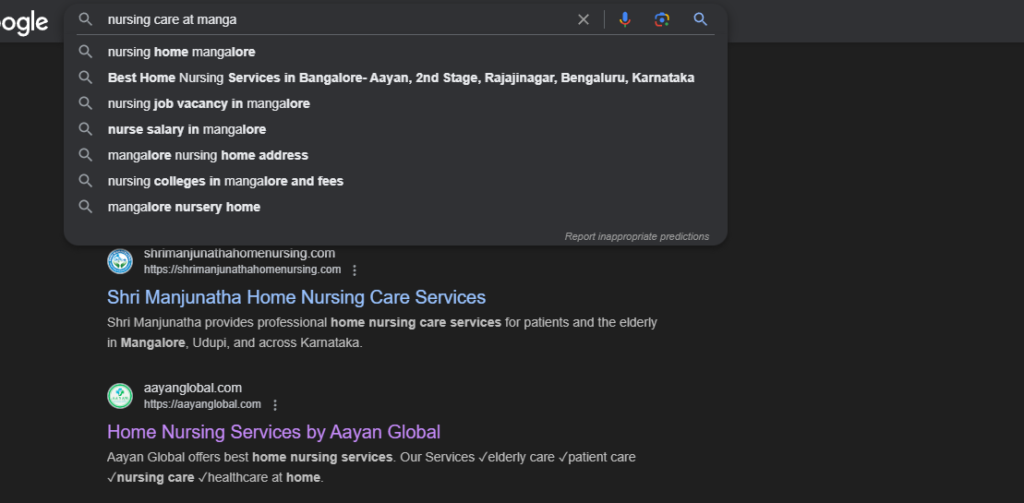
Leverage Google Keyword Planner
Google Keyword Planner is another great tool to find location-specific keywords. It allows you to search for keyword ideas based on your location, and it provides search volume, competition, and cost-per-click data. By focusing on geo-targeted keywords (e.g., “best orthodontist in [city]” or ” dentist in [neighborhood]”), you can refine your strategy for local SEO
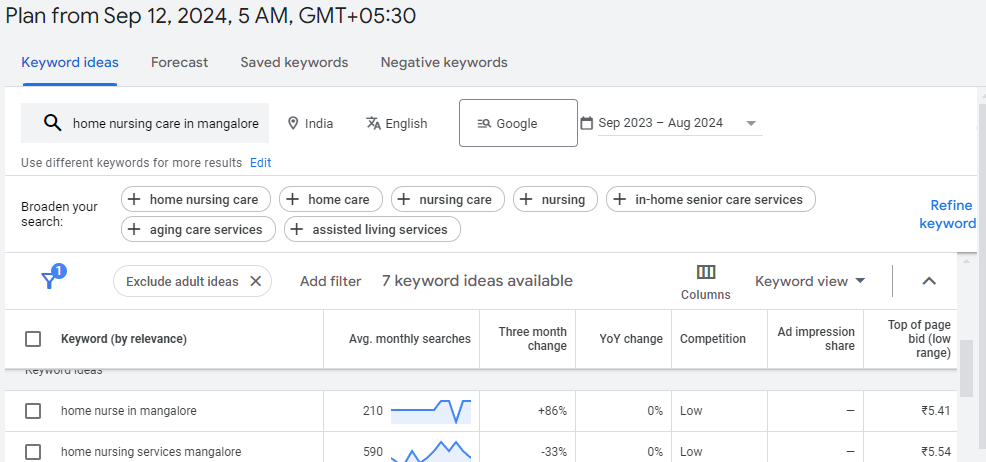
Optimize Your Google Business Profile (GBP)
Google Business Profile (GBP) is crucial for Local SEO success. It directly impacts your visibility in local search results and the Google Map Pack. Here are key steps to optimize it:
Must have NAP (Name, Address, Phone Number) Consistency
Make sure your Name, Address, and Phone Number (NAP) are consistent across all platforms—your website, GBP, directories, and social media. Inconsistent NAP information can confuse Google and hurt your local rankings.
Add Photos and Business Information
Adding high-quality photos of your business, products, or services enhances your profile’s appeal. Visual content is important to attract local customers. Be sure to include photos of your storefront, interiors, team, and even happy customers.
Also, keep your business information complete and updated—business hours, services offered, and contact details should be accurate.
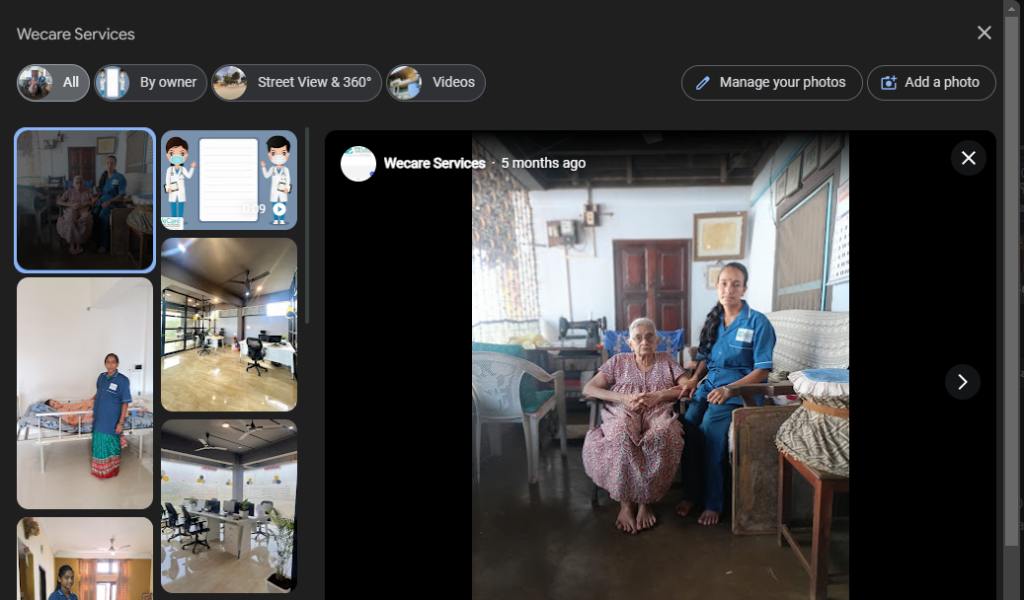
Write a Compelling Business Description
Your business description is a chance to showcase what you do best. Write a clear, engaging, and keyword-optimized description of your services and what sets you apart. Mention your location and services to improve local relevancy (e.g., “We are a family-owned dental practice located in [city], offering top-notch dental care and cosmetic dentistry services.”).
Keep Your Google Business Profile Active
An active Google Business Profile improves engagement and visibility. Regularly update your profile with posts about promotions, new services, and announcements. Keep responding to questions and reviews promptly to show you’re engaged with your community.
Post Updates Regularly: Adding new posts on Google Business Profile keeps your audience informed and boosts your presence. Share blog posts, offers, or special events.
Respond to Reviews: Always reply to both positive and negative reviews. This shows that you value customer feedback, which improves trust and can positively impact your local SEO rankings.
Get and Monitor Local Citations
Local citations are online mentions of your business’s NAP across different websites, such as local directories, review sites, and social media platforms. These help reinforce your business’s credibility and authority in a specific location.
Use Tools to Manage Citations Consistently
Tools like Whitespark or Moz Local can help you identify where your business is cited and ensure consistency across all platforms. Managing citations reduces the risk of NAP inconsistencies and improves your chances of ranking in local search results.
Encourage and Respond to Online Reviews
Online reviews are a major ranking factor in local SEO. Positive reviews not only improve trust but also help you rank higher in local search results. Encourage your customers to leave reviews and always respond professionally, whether the feedback is positive or negative.
Encouraging Reviews: Politely ask satisfied customers to leave a review, either through email campaigns or by adding a call-to-action on your website.
Responding to Reviews: For positive reviews, thank the customer and show appreciation. For negative reviews, respond calmly and offer a solution to resolve the issue. This helps manage your reputation and builds customer trust.
Refine Your On-Page SEO for Local Search
Optimizing your website’s on-page elements for local search is key to improving visibility in organic local results.
Title Tags and Meta Descriptions
Make sure your title tags and meta descriptions include your target local keywords. For example, instead of just saying “Plumbing Services,” you could say “Best Plumbing Services in [City Name].” This reinforces local relevancy.
Localized Content Creation
Create content that speaks to your local audience. Blog about topics relevant to your area, such as local events or how your services address specific community needs. Incorporate local keywords naturally into your content to improve relevancy.
For example, if you’re a real estate agent, you could write blog posts on “Top Neighborhoods in [City]” or “What to Consider When Buying a Home in [City].”
Optimize Internal Linking Structure
Link to other relevant local pages on your website to improve your internal linking structure. For instance, if you have multiple service pages (e.g., “Roofing in [City]” and “Roof Repairs in [City]”), link them to each other where appropriate. This helps Google understand the relationship between your content and improves user navigation.
Build Local Backlinks
Backlinks from local sources can significantly boost your local SEO efforts. Aim to acquire links from local directories, chambers of commerce, local news outlets, and local business partners.
Submit to Local Directories: Make sure your business is listed on reputable local directories like Yelp, Yellow Pages, and industry-specific directories.
Building strong local backlinks improves both your domain authority and local relevance, helping you rank higher in local search results.
How to Monitor Your Local SEO Results
Monitoring your Local SEO results is essential to ensure that your efforts are paying off. By consistently tracking your progress, you can make data-driven decisions to further optimize your strategy. Here are the key methods to track the effectiveness of your Local SEO.
Track Your Rankings in Google Maps
Google Maps is a critical platform for local businesses, as it often provides the first point of interaction with potential customers. You can track your rankings in Google Maps by:
Google Business Profile Insights: GBP offers insights into how often your profile appears in searches and how users interact with your business. Check the “Queries used to find your business” section to see the top search terms people use.
For instance, if you see that 70% of your searches come from “dentist near me,” you know that your local SEO is driving relevant traffic.
Third-Party Tools: Tools like BrightLocal or Whitespark offer more in-depth tracking of your Google Maps rankings. They allow you to track your business’s performance over time and compare it with competitors in the area. This can help you understand fluctuations in rankings, whether it’s due to changes in your optimization efforts or new competitors.
Manually Checking Rankings: You can manually search for your business on Google Maps using various local keywords to see where you stand. However, this method may be biased based on your search history and location, so tools offer more reliable data.
Track Your Local Rankings in Google Search
Your local rankings in organic search results are just as important as your presence in Google Maps. Here’s how you can monitor your local rankings:
Google Search Console: Use Google Search Console to track your website’s performance in local search queries. Check the “Search Performance” report and filter by location-based queries to see which local keywords drive traffic. This tool also allows you to monitor changes in click-through rates (CTR), impressions, and average position over time.
For example, if your website’s ranking for “plumbers in [city]” has moved from the 12th position to the 5th, you can analyze the specific strategies that contributed to this jump.
Rank Tracking Tools: Use SEO tools like SEMrush, Ahrefs, or Moz to monitor your local rankings. These tools offer features that allow you to track specific location-based keywords and compare your performance with local competitors. You can set up keyword tracking for queries like “[service] near me” or “[service] in [city]” to monitor your exact ranking positions.
Localized Search Queries: To better simulate real-world results, you can use incognito mode or location-specific tools that mimic searches from a particular location. Tools like BrightLocal’s Local Search Results Checker allow you to see how your business ranks in various cities, neighborhoods, or zip codes, providing more accurate data.
Additional Metrics to Track
Aside from rankings, here are some additional metrics to monitor the success of your Local SEO:
Conversion Rate from Local Search Traffic: Measure how many users convert (e.g., make a call, submit a form, visit your location) after finding your business through local search.
Review Volume and Sentiment: Keep track of the number of reviews you receive and their sentiment. A business with a high volume of positive reviews often performs better in local search rankings.
Engagement on Google Business Profile: Pay attention to actions such as click-to-call, website visits, and direction requests on your GBP, as these can signal how well your local SEO efforts are driving customer actions.
Start Building Your Local Visibility
Building strong local visibility is crucial for ensuring that your business stands out in location-based searches. Here are actionable tips to help you improve your presence, from optimizing content to engaging with the local community.
Optimize Your Website’s Local Content
To rank higher in local search results, it’s important to ensure your website content speaks directly to your local audience. Here’s how:
Include Location-Specific Keywords: Use keywords that incorporate your location, such as “[service] in [city]” or “[service] near me.” For example, a plumber in Chicago should create content around “plumbing services in Chicago.”
Create Localized Blog Posts and Articles: Develop content that speaks to the needs of your local audience. This could include writing about local events, offering seasonal tips, or covering topics relevant to the community. For example, a dental practice could write about the “Best Foods for Dental Health in [City]” to appeal to local readers.
Localized Landing Pages: If your business serves multiple locations, create dedicated landing pages for each area you serve. Include the location in the page title, meta descriptions, and content. Each page should have unique content tailored to that specific area, such as local customer testimonials, photos, or services unique to the region.
Claim and Optimize Your Google Business Profile (GBP)
One of the most effective ways to increase your local visibility is by optimizing your Google Business Profile.
Fully Complete Your Profile: Make sure all sections of your GBP are filled out, including your business name, address, phone number (NAP), business hours, and service areas. Ensure that this information is consistent across all platforms, as inconsistent details can negatively affect your local SEO.
Add Photos and Descriptions: Add high-quality images that showcase your business. Businesses with photos receive 42% more requests for directions and 35% more clicks to their websites than those without . Also, write a compelling business description that includes relevant keywords, describing what makes your business unique.
Engage with Reviews: Encourage satisfied customers to leave reviews and respond to them promptly. Positive reviews signal trustworthiness to both search engines and potential customers.
Optimizing for Google’s Local Map Pack: Unique Strategies
To stand out in Google’s Local Map Pack and avoid redundancies that harm engagement, we’ll dive into advanced, less-discussed techniques. Let’s go beyond the basics and focus on unique strategies for optimizing your business presence in the Map Pack.
Hyper-Local Keyword Strategy
While traditional local keywords focus on “service + city,” Google has gotten better at recognizing intent and user location. You can use hyper-local keywords that target specific neighborhoods, landmarks, or districts.
Tip: Instead of just “plumber San Diego,” create content around keywords like “plumber near [landmark]” or “plumber in [neighborhood].” This granular targeting helps you appear for micro-areas where competition might be lower.
Google Posts for Map Pack Ranking
Many businesses overlook the power of Google Posts in boosting Map Pack visibility. Google Posts act as mini-ads on your Google Business Profile (GBP) and provide engagement opportunities with your audience directly in search results.
Strategy: Regularly publish posts on your GBP that highlight promotions, events, or updates. Posts not only increase user engagement but can also influence Google’s perception of your business’s activity and relevance.
Optimize for "Near Me" Searches
“Near me” searches have surged, especially for mobile users. Google determines results based on a combination of proximity and relevance.
Advanced Tip: Embed local schema markup (such as LocalBusiness or Place schema) directly into your website’s code to help Google identify your business for “near me” searches. This ensures Google fully understands your exact location.
Use UGC (User-Generated Content) to Boost Trust
One underutilized tactic is leveraging user-generated content (UGC) to rank in the Map Pack. When customers post photos or reviews, it signals to Google that your business is active and engaging with the community.
Unique Approach: Run local campaigns where you encourage users to post photos or share their experiences, tagging your business on social media. Display these on your website to create a loop of credibility that boosts both your SEO and Google’s trust in your business.
Service Area Optimization for Multi-Location Businesses
If you have multiple locations, you can extend your Map Pack reach by optimizing for service areas. Many businesses don’t fully utilize the “service area” option in GBP, which allows you to rank in additional nearby areas even if you don’t have a physical office there.
Tip: Update your Google Business Profile to include relevant service areas, making sure these locations align with the nearby cities or regions you want to target for the Map Pack.
Map Pack Ranking for Voice Search
With the rise of voice search, optimizing for conversational queries is key. Voice search often pulls results from the Map Pack, making it crucial to tailor your local SEO efforts for this trend.
Actionable Tip: Use conversational phrases like “Where can I find [service] in [city]?” or “Best [service] near me.” Focus on long-tail keywords that align with how people speak when using voice search.
Measure Engagement Through Custom UTM Parameters
Track user interaction with your GBP by using custom UTM parameters. This allows you to understand how people find your business through local search and interact with your listing.
Unique Application: Add UTM tags to your website link in GBP to track clicks and user behavior. This gives you actionable data on how effective your local SEO strategy is and provides insights into where adjustments are needed.
Optimizing for Google’s Local Map Pack goes far beyond filling out your Google Business Profile. By implementing hyper-local keywords, leveraging UGC, and adopting advanced strategies like geo-fencing and voice search optimization, you can rank higher and dominate your local market. Each of these tactics targets a unique aspect of local SEO, reducing overlap and improving user engagement.
Advanced Local SEO Strategies
Once you’ve mastered the basics of local SEO, it’s time to implement advanced tactics to further enhance your visibility and stay ahead of the competition. Below are key strategies that can take your local SEO to the next level.
Optimize for Voice Search
With the rise of voice-activated devices like Amazon Alexa, Google Assistant, and Siri, optimizing for voice search has become essential. Statistics show that 58% of consumers have used voice search to find local business information in the last year. To capture this growing audience:
Focus on Conversational Keywords: Voice search queries are often longer and more conversational, such as “Where’s the best Italian restaurant near me?” Optimize for natural-sounding phrases and question-based keywords.
Optimize for Question Queries: Include FAQs on your website with questions like “What time does [your business] open?” or “Where is [your business] located?” This helps align with the way people ask questions in voice searches.
Optimize for Mobile and Local Intent: Since many voice searches are performed on mobile devices, ensure your site is mobile-friendly and loads quickly. Additionally, focus on local keywords like “near me” or “[city] + service” to capture local voice searches.
Use Local Business Schema Markup
Schema markup is a form of microdata that helps search engines understand your content better. Local business schema is specifically designed to improve how your business is represented in search results, including rich snippets that highlight reviews, business hours, and location. Implementing local business schema can boost click-through rates by up to 30%.
Implement Structured Data: Add schema markup to your website using Google’s Structured Data Markup Helper or manual coding. This data provides search engines with additional context about your business.
Include Business-Specific Information: Use schema to mark up essential details like your business’s name, address, phone number (NAP), opening hours, and customer reviews. This information helps search engines display rich snippets directly in search results, enhancing visibility.
Enhance SERP Presence: Schema markup increases your chances of appearing in Google’s knowledge panels and rich results, which can drive more traffic to your site.
Local SEO Audit: How to Perform One
A local SEO audit is essential for identifying strengths, weaknesses, and opportunities in your local SEO efforts. By following a structured approach, you can ensure that all key aspects of your local search optimization are performing at their best. Below is a step-by-step guide to conducting a comprehensive local SEO audit.
Step 1: Audit Your Google Business Profile (GBP)
Start by reviewing your Google Business Profile (GBP), as this is a critical element of local SEO.
Ensure NAP Consistency: Check that your business’s Name, Address, and Phone Number (NAP) are accurate and consistent across all platforms.
Verify Business Hours: Ensure your operating hours are correct and updated, including special holiday hours.
Monitor Reviews and Respond: Regularly respond to customer reviews, both positive and negative, as engagement improves rankings. Businesses that respond to reviews see 33% higher engagement from customers.
Optimize the Profile with Keywords: Ensure your GBP is optimized with relevant local keywords, such as “[City] + service.”
Step 2: Check Your Local Citations
Local citations are mentions of your business on other websites, including local directories, review sites, and social media. Inconsistent or incomplete citations can hurt your local SEO.
Verify Consistent NAP: As with your GBP, ensure that your NAP details are identical across all local citation sources, such as Yelp, Yellow Pages, and Facebook.
Use Citation Management Tools: Tools like Moz Local, BrightLocal, or Yext can help you manage and update your local citations efficiently.
Step 3: Analyze On-Page Local SEO
On-page SEO plays a crucial role in how well your site ranks for local searches. Conduct a detailed audit of your website’s on-page factors:
Review Title Tags and Meta Descriptions: Ensure your title tags and meta descriptions include local keywords like “[City] + service” to attract local search traffic.
Check for Localized Content: Create content that speaks directly to your local audience. For instance, blog posts that target local events or issues can increase engagement with your community.
Optimize Internal Linking: Make sure your internal linking structure includes links to important local pages, such as your services, contact page, and location pages.
Step 4: Evaluate Backlinks from Local Sources
Backlinks are a major ranking factor in local SEO, accounting for 27.94% of local pack ranking factors. Assess the quality and quantity of your local backlinks:
Identify Local Backlinks: Use tools like Ahrefs or SEMrush to find backlinks from local businesses, community sites, or local news outlets.
Check for Broken Links: Fix any broken links on your website to ensure a smooth user experience and avoid penalties from search engines.
Seek New Opportunities: Look for new opportunities to acquire local backlinks, such as partnerships with local organizations or participation in community events.
Step 5: Monitor Your Rankings in Google Maps and Local Search
Tracking your performance in both Google Maps and local search results is key to understanding the effectiveness of your local SEO strategy.
Use a Rank Tracking Tool: Tools like BrightLocal or Whitespark can help you monitor your local search rankings and identify where you can improve.
Track Google Maps Visibility: Ensure that your business is appearing in the local pack results on Google Maps for relevant search terms.
Step 6: Review Mobile Usability
Since 78% of local mobile searches result in an offline purchase, having a mobile-optimized website is crucial.
Test Mobile Responsiveness: Use Google’s Mobile-Friendly Test to ensure that your site loads quickly and is easy to navigate on mobile devices.
Check for Fast Load Times: A slow website can hurt your rankings and user experience. Use PageSpeed Insights to check your site’s load time and make necessary improvements.
Step 7: Analyze User Reviews and Ratings
Reviews and ratings are important signals for local SEO. 85% of consumers trust online reviews as much as personal recommendations.
Check Review Volume: Aim to collect more reviews from your customers, as businesses with more reviews often rank higher in local searches.
Evaluate Review Quality: Ensure that reviews are genuine and from actual customers. Encourage positive feedback by providing excellent service and responding to negative reviews professionally.
Conclusion
Local SEO isn’t just a “nice-to-have”—it’s a game-changer. In today’s competitive landscape, mastering local search means the difference between being seen or being invisible. We’ve covered the steps, from optimizing your Google Business Profile to building local backlinks, and now it’s time to put these strategies into action.
Remember, the effort you invest in your local SEO today can translate into real-world results tomorrow—like more customers walking through your doors. The key is consistency, staying active with updates, and keeping an eye on your local rankings.
You’re now equipped with the tools and insights to make your business stand out in your community. Ready to own your local market?
